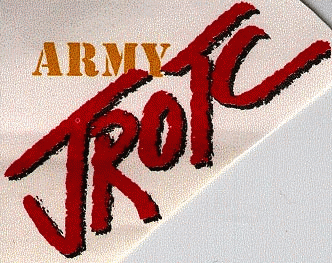show JROTC version of Hiroshima is misleading
This summer the world will pause to commemorate the 68th anniversary of the dropping of the atomic bombs on Hiroshima and Nagasaki. Most Americans are still supportive of Truman's decision despite overwhelming historical evidence the bomb had "nothing to do with the end of the war," in the words of Major General Curtis E. LeMay.
Americans suffer from a misinformation campaign initially perpetrated by the Truman administration and carried on to this day by high school textbooks that continue to tell the story as if Hiroshima and Nagasaki were indispensible in ending the war and saving countless American lives. The historical record is clear, however. As President Dwight D. Eisenhower said, "It wasn't necessary to hit them with that awful thing."
There is no hint of controversy regarding the decision to drop the bomb in the majority of texts in use in American classrooms and many textbooks contain blatant historical inaccuracies, but the greatest purveyor of historical mistruth is the U.S. Army's Leadership, Education and Training (LET 3) Custom Edition for Army JROTC. JROTC is the Junior Reserve Officers' Training Corps. More than a half million American high school students are enrolled in JROTC classes nationwide.
JROTC students do more than march in uniform on the football field. They study government (The unit on constitutional law is entitled "You the People"), and they study a "history" of sorts. The JROTC treatment of Truman's decision to drop the bomb is riddled with falsehoods and leaves students convinced that destroying those cities was the right thing to do.
Thanks to policymakers and military leaders of the era who have subsequently told their stories, we know today what transpired. We can also thank Professor Gar Alperovitz of the University of Maryland for a stellar academic career dedicated to analyzing American policy in this regard. Quite simply, President Truman dropped those bombs on a defeated Japan to tell the Russians and the world to back off. We had two bombs and we were going to use them. In a typically cavalier fashion, Admiral William F. Halsey, Jr., Commander, U.S. Third Fleet remarked, "It was a mistake to ever drop [the bomb]. . .they had this toy and they wanted to try it out, so they dropped it. ."
Today we know:
- The bombs weren't needed to win the war. Every top U.S. military leader of the era has since stated that the bombing of Hiroshima and Nagasaki were militarily insignificant.
- The idea that dropping the bombs saved a million American lives is completely fabricated. The war against Japan could have been "won" without additional loss of life.
- The Japanese had been trying to surrender for months. They simply wanted to guarantee their emperor's safety, a desire the Americans eventually allowed.
- The Japanese would have unconditionally given up without the destruction of Hiroshima and Nagasaki when the Soviet Union entered the war.
- The bombing was not so much the last military chapter of the Second World War as it was the first Chapter of the Cold War.
The authors of the JROTC course book grapple with the decision to drop the atomic bomb on Japan within the context of an ethical case study where students discuss ethical choices and consequences inherent in a series of historical events. Rather than presenting an unbiased version of events, the discussion is tainted by a strong preference toward bombing Japan, complete with falsehoods and inexcusable omissions.
The JROTC text packages all the most prevalent misperceptions regarding Truman's decision into one outrageous historical account. The U.S. Army is teaching high school students that using atomic weaponry was necessary to forestall a costly invasion of the Japanese mainland that would have cost a million American lives. The text leaves the impression that the Japanese military in mid-1945 was extraordinarily powerful and that the Japanese were fanatical in their resolve to resist. The text also perpetrates the falsehood that the top brass supported the bombing when in fact all of the top brass subsequently came out to object to its use. Finally, and perhaps most egregiously, the Army's version of events distorts the complex geostrategic mix involving the Soviets.
The Army text leaves out
Japanese attempts to surrender. The book makes no mention of the prior agreements
to bring the Soviets into the war against Japan or the Soviet declaration of
war on August 8th. The JROTC text fails to recognize that Japanese power
quickly disintegrated during the first 6 months of 1945, especially after the
US firebombing campaign destroyed 180 square miles of 67 cities, killing more
than 300,000 people, figures that exclude the atomic bombing of Hiroshima and
Nagasaki. The book doesn't describe absolute American control of Japanese skies
in the summer of 1945.
Consider the following
selections from Leadership, Education and Training 3:
"The Soviet Union had not participated in the Pacific campaign,
choosing to remain neutral with Japan while fighting for survival against
Germany. Truman was in Potsdam meeting with Churchill, trying to enlist the
aide of Stalin, when he learned of the atomic test at Trinity."
(Note: You can view every article as one long page if you sign up as an Advocate Member, or higher).






